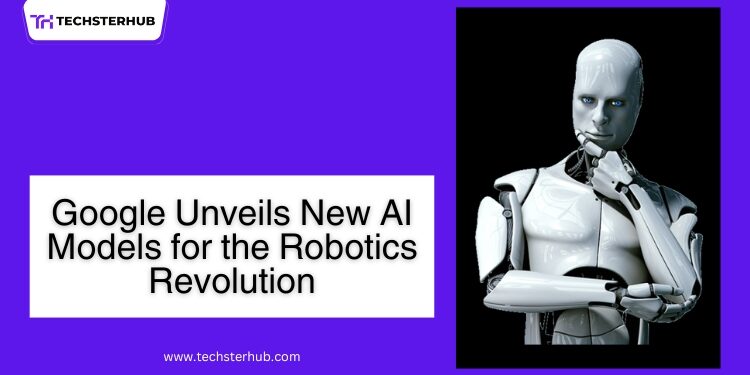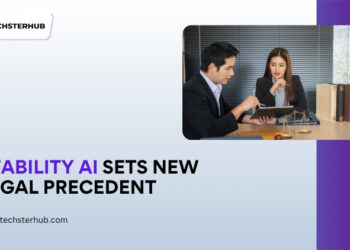The robotics industry has experienced rapid growth over the recent years to become one of the world’s fastest expanding sectors. The constant development of new technologies enables robots to operate in multiple sectors including healthcare facilities, production factories and domestic spaces. Google which stands as a top global tech firm has taken major steps toward enhancing robotic functionality.
Google now offers Artificial Intelligence models which have been specifically developed for robotic applications. The latest AI models developed by Google aim to enhance robots by making them smarter and more efficient while enabling them to perform increasingly complex tasks. We will examine the impact of Google’s latest AI models on the robotics industry.
What Is AI in Robotics?
Understanding the role of AI in robotics is essential before examining Google’s new AI models. The term Artificial Intelligence describes machines or robots that possess the ability to think, learn, and solve problems in a manner similar to humans. AI enables robots to operate independently without human guidance for every step.
AI enables robots to perceive their environment while deciding how to act based on visual information and learning through their experiences. With AI capabilities robots become significantly more practical for daily tasks such as warehouse package sorting and surgical assistance as well as household cleaning.
Google’s New AI Models: What’s the Big Deal?
Google has developed new AI models for robotics to enhance robots’ intelligence and enable them to better adjust to their surroundings. Advanced machine learning techniques enable robots to understand their environment and interact with it with improved efficiency.
Google’s new AI models provide three primary enhancements for robotics.
- Better Understanding of the Environment: Robots require knowledge about their surroundings to perform their tasks. Google’s AI models boost robotic vision systems to interpret their immediate environment as they operate. This AI enables warehouse robots to recognize various items and successfully lift them without causing any drops.
- Improved Decision-Making: The capacity to make decisions stands as a central component of artificial intelligence systems. Google has released AI models which enable robots to make better decisions when they encounter unexpected scenarios. In an assembly line setting robots equipped with AI can autonomously select the appropriate tools required for specific tasks without needing human direction.
- Learning from Experience: Robots can develop better skills and performance through learning mechanisms built into Google’s AI models which analyze their past work experiences. The more tasks’ robots complete, the greater their proficiency becomes. Through practice robots powered by Google’s AI develop better performance capabilities similar to human learning patterns.
How These AI Models Will Impact Robotics
Google’s introduction of new AI models will significantly transform the robotics industry. These enhancements will transform several essential areas.
- Manufacturing and Industry
Factories and warehouses currently deploy robots to execute repetitive functions including item picking and product sorting as well as part assembly. The existing robots operate under limitations because they can only execute pre-programmed instructions. Google’s AI models will enable these robots to adjust to new tasks and environments thereby increasing their flexibility. Production could become quicker while errors decrease and dangerous or tedious jobs require fewer human workers.
- Healthcare
The healthcare sector uses robots in performing surgical procedures while they also support doctors during operations and aid patients throughout their recovery process. The development of medical robotics can reach new heights of advancement through Google’s artificial intelligence models. Surgical robots equipped with learning capabilities from previous surgeries will achieve better precision and minimize the likelihood of errors. Robots hold potential to support elderly patients through health monitoring and assistance delivery as required.
- Home Assistance
Google’s AI models possess the ability to transform residential robot assistance. Although vacuum cleaners and lawn mowers equipped with robotic technology show increasing popularity among consumers they continue to show room for improvement. These robots will improve their environmental understanding and obstacle avoidance while learning house layouts through Google’s AI models. Your home assistant robots will become more intelligent and effective which will simplify your everyday tasks.
- Autonomous Vehicles
Waymo serves as Google’s subsidiary which operates in the self-driving car technology sector. Self-driving cars could become both safer and smarter thanks to new AI models. Self-driving cars with enhanced decision-making capabilities will manage complicated driving scenarios including abrupt weather shifts and unforeseen road blockages.
The Role of Machine Learning in These AI Models
Google built its new AI models using machine learning as their core technology. Machine learning functions by enabling robots to analyze data and improve decision-making processes over time through learning. Google’s AI systems utilize reinforcement learning as their machine learning technique.
Reinforcement learning enables robots to achieve specific objectives through task completion by acquiring rewards. A robot receives a point as a “reward” for successfully identifying an object. With ongoing learning, the robot improves its task performance while enhancing efficiency. Robots can enhance their operational abilities without requiring constant human reprogramming thanks to this learning approach.
Why Is This Important for the Future?
The robotics industry is expanding at a fast pace and Google’s latest AI models have the potential to significantly influence its direction. The increasing intelligence and capacity of robots will enable them to perform a wider range of tasks and assume more complicated functions. The introduction of these technologies will boost performance across manufacturing, healthcare and transportation sectors.
However, with these advancements come challenges. The automation of tasks by robots will generate worries about potential job losses for workers who currently perform these functions. The advancement of robots will prompt ethical debates about the extent of decision-making power that should be granted to machines.
Even with these challenges remaining, Google’s latest AI models deliver a major advancement for the field of robotics. The development of these technologies creates a pathway toward a future where human workers will collaborate with robots to enhance productivity and ease in everyday life.
Conclusion
The launch of Google’s new AI models for robots marks a thrilling advancement within the robotics sector. Advanced AI models will enable robots to become smarter and more efficient while allowing them to adapt to more complex tasks across manufacturing industries and healthcare sectors as well as household applications. Despite future roadblocks these AI-driven robots offer substantial benefits and will likely become fundamental in transforming technology development and daily living.
As robots continue to evolve, one thing is certain: Robotics will continue to progress and companies such as Google are leading this advancement.











